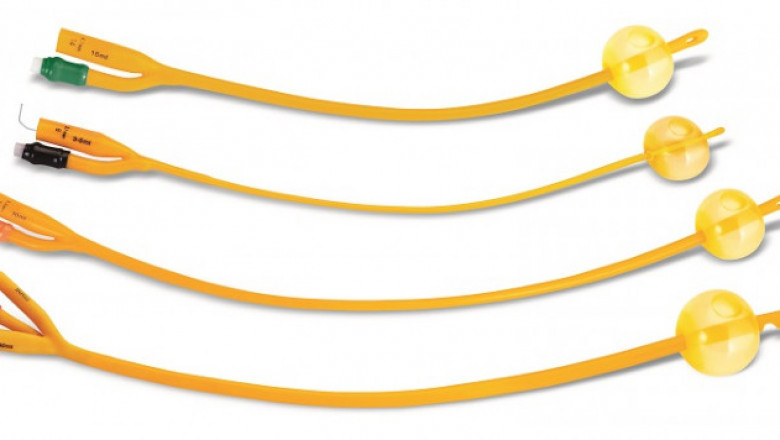views
A Foley catheter is a thin, soft tube used to drain or collect urine from the bladder. It is inserted through the urethra and into the bladder. One end of the catheter is left in the bladder while the other end remains outside the body. This external portion has a balloon at the tip that can be inflated once inside the bladder to help hold the catheter in place. They are often used after surgery when a patient is unable to empty their bladder on their own or during urologic procedures.
Insertion and Placement of Foley Catheters
Insertion of a Foley Catheters involves carefully guiding the deflated tube into the urethra and up into the bladder. Once the tip reaches the bladder, sterile water or saline is injected into the catheter’s balloon. This inflates the balloon and secures the catheter inside the bladder. The catheter is then connected to a drainage bag to collect urine output. Proper lubrication of the catheter is necessary to avoid damage to the urethra during placement. Lidocaine jelly is commonly used to ease insertion and reduce discomfort. Sterile technique must be followed when inserting and handling a catheter.
Catheter Types and Components
There are a few common types of Foley catheters based on material composition and intended use. Straight or male catheters have a straight tube shape and are typically used in men. Female catheters have a special curved tip to more easily access the female urethra and bladder. Catheters also vary in width or diameter typically ranging from 12 to 24 French size (1 French = 1/3 millimeter). Larger catheters are needed for procedures like irrigation. All Foley catheters have similar basic components including the drainage lumen or tube, an inflatable balloon, and one or two inflation ports. The balloon is inflated via one port and urine drains out through the other lumen.
Short-Term Uses of Catheters
One of the most common short-term uses of indwelling catheters is after surgical procedures when patients are unable to urinate on their own in the immediate postoperative period. This ensures continuous urine drainage and prevents bladder overfilling and discomfort. They may also be placed to help monitor urine output in critically ill patients. Other temporary uses include during urologic exams and procedures, during radiation therapy to the pelvis, and to temporarily bypass urinary obstruction in cases like kidney stones. Proper sterile technique is vital for short-term catheters to prevent infection.
Long-Term Catheter Use and Care
Long-term indwelling catheters remain in place for an extended period of time, often weeks to months. This occurs when a patient has ongoing urinary incontinence or retention issues that prohibit emptying the bladder without assistance. Special care steps must be followed to prevent catheter-associated urinary tract infections which are a major risk with prolonged use. Regular cleaning of the catheter exit site with gentle soap and water helps reduce bacteria buildup. Continual drainage of the collection bag is important as well to avoid backflow and pressure on the bladder. Antibiotic creams may also be applied around the catheter.
Complications of Catheter Use
While often necessary, catheter placement does increase the risk of certain complications versus being catheter free. One of the most serious issues is catheter-associated urinary tract infections which can lead to more serious infections like bacteremia or sepsis if left untreated. Other potential complications include urethral trauma or irritation during insertion, blockage of urine flow around the catheter, and discomfort. In rare cases, catheter materials can degrade or break leading to internal fragments. Maintaining a closed sterile drainage system helps prevent many complications, but long-term catheter dependency should generally be avoided if possible.
Future Advancements
Research continues on developing improved catheter designs and materials to reduce risk of complications. Antimicrobial and antibiofilm coatings are being studied to combat infection issues. Other possible innovations include catheters made of softer, more biocompatible materials like silicone or hydrogel polymers rather than latex. Shape memory alloys are being explored for catheters that could self-adjust inside the body for better drainage and comfort. Eventually catheters may become fully implantable and include artificial sphincter components to more naturally mimic bladder function. For now, Foley catheters remain a mainstay of modern urologic care when needed to properly drain the urinary bladder.
As this article described, Foley catheters are commonly used thin drainage tubes inserted through the urethra into the bladder. They work by draining urine into an external collection bag via one lumen while their inflatable balloon secures the catheter inside using sterile water injected through a separate port. Catheters come in different types, sizes, and are used both short and long-term, but require proper sterile technique to reduce risk of complications like infections. Future research aims to develop improved safer catheter materials and designs. Overall, Foley catheters effectively fulfill their role of maintaining urine drainage when normal bladder function is compromised.
Get this Report in Japanese Language:
Get this Report In Korean Language:
About Author:
Alice Mutum is a seasoned senior content editor at Coherent Market Insights, leveraging extensive expertise gained from her previous role as a content writer. With seven years in content development, Alice masterfully employs SEO best practices and cutting-edge digital marketing strategies to craft high-ranking, impactful content. As an editor, she meticulously ensures flawless grammar and punctuation, precise data accuracy, and perfect alignment with audience needs in every research report. Alice's dedication to excellence and her strategic approach to content make her an invaluable asset in the world of market insights.
(LinkedIn: www.linkedin.com/in/alice-mutum-3b247b137 )






















Comments
0 comment